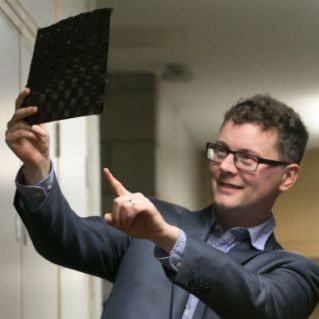Microfabrication and Patterning Techniques in Tissue Engineering and Regenerative Medicine
A special issue of Applied Sciences (ISSN 2076-3417). This special issue belongs to the section "Chemical and Molecular Sciences".
Deadline for manuscript submissions: closed (28 February 2019) | Viewed by 10719
Special Issue Editors
Interests: structure/property relationships in polymers; biopolymers; biomedical polymers; tissue engineering; polymer composites; polymer processing; hydrogels
Special Issues, Collections and Topics in MDPI journals
Interests: nanobiomaterials; nanomedicine; theranostics; tissue engineering; 3D printing; 3D in vitro tissue models of disease
Special Issues, Collections and Topics in MDPI journals
Special Issue Information
Dear Colleagues,
Microfabrication and patterning techniques are gaining ever more importance. 3D bioprinting shows great deal of promise to revolutionize the field of tissue engineering and regenerative medicine, due to its ability to generate mimetic tissues and organs on demand. This can only be realized by advancing bioink development in order to produce patient-specific scaffolds with inbuilt hierarchical structures and memory-shape properties, while offering enhanced biological properties. It is expected that this will allow the realization of the bioinspired design approach. Further to this, 3D patterning of scaffolding materials is possible using spatially controlled light exposure and capillary force lithography on biological films and scaffolds to tune mechanical and degradation properties. For example, femtosecond laser induced two-photon polymerization is capable of producing 3D nanoscale patterns on hydrogel scaffolds with precise control of geometry. Protein structures can be patterned within these 3D hydrogels with nanoscale resolution to allow the incorporated chemical cues associated with the extracellular matrix (ECM). This Special Issue of the journal Applied Sciences is focused on “Microfabrication and Patterning Techniques in Tissue Engineering and Regenerative Medicine” aims to cover the latest research findings and recent advances in the field.
Dr. Maurice N. Collins
Prof. Dr. J. Miguel Oliveira
Guest Editors
Manuscript Submission Information
Manuscripts should be submitted online at www.mdpi.com by registering and logging in to this website. Once you are registered, click here to go to the submission form. Manuscripts can be submitted until the deadline. All submissions that pass pre-check are peer-reviewed. Accepted papers will be published continuously in the journal (as soon as accepted) and will be listed together on the special issue website. Research articles, review articles as well as short communications are invited. For planned papers, a title and short abstract (about 100 words) can be sent to the Editorial Office for announcement on this website.
Submitted manuscripts should not have been published previously, nor be under consideration for publication elsewhere (except conference proceedings papers). All manuscripts are thoroughly refereed through a single-blind peer-review process. A guide for authors and other relevant information for submission of manuscripts is available on the Instructions for Authors page. Applied Sciences is an international peer-reviewed open access semimonthly journal published by MDPI.
Please visit the Instructions for Authors page before submitting a manuscript. The Article Processing Charge (APC) for publication in this open access journal is 2400 CHF (Swiss Francs). Submitted papers should be well formatted and use good English. Authors may use MDPI's English editing service prior to publication or during author revisions.
Keywords
- 3D Printing
- Biomaterials
- Biopolymers
- Bioinks
- Hydrogels
- Microfabrication
- Musculoskeletal
- Patterning
- Processing methods
- Tissue engineering and regenerative medicine






